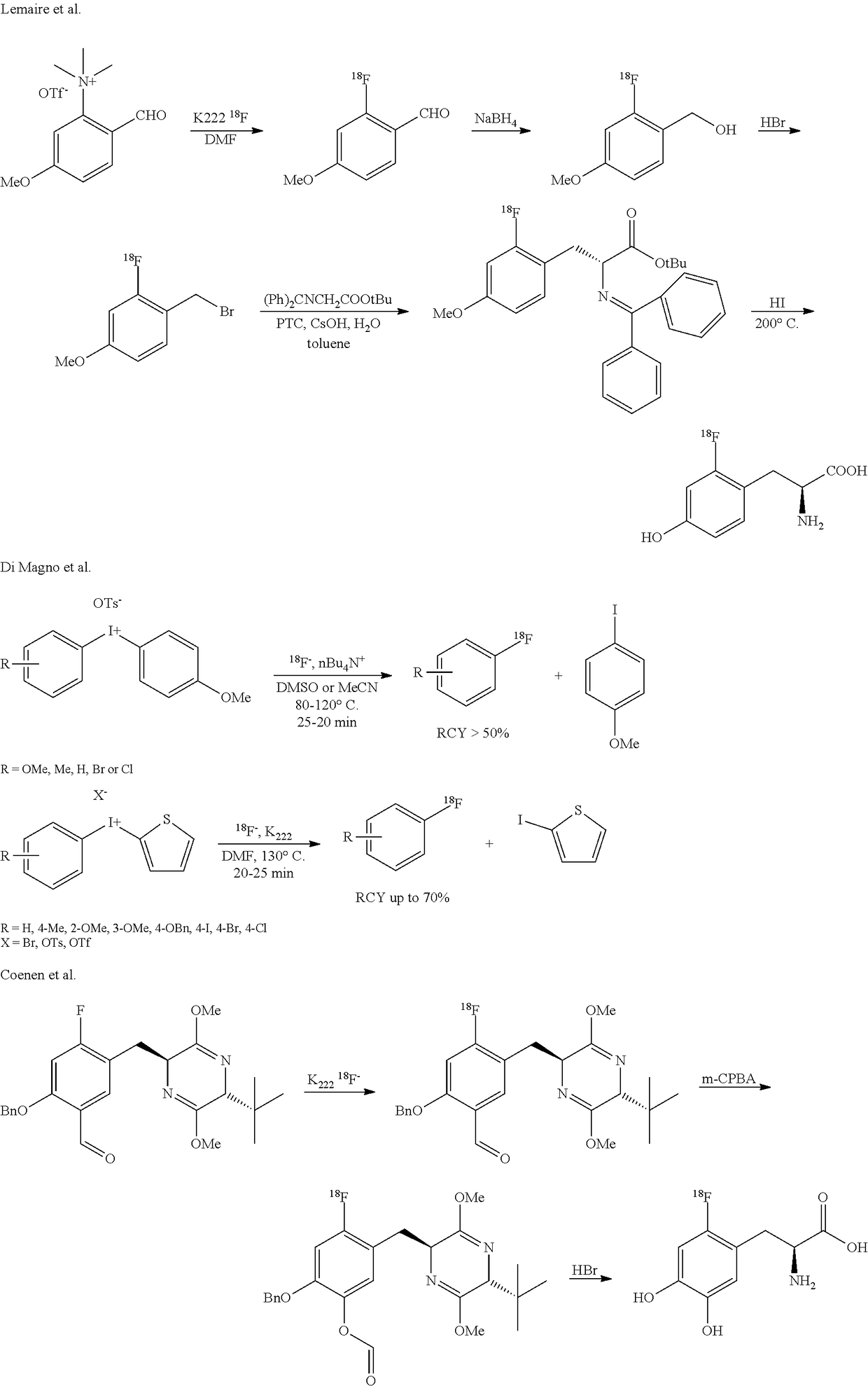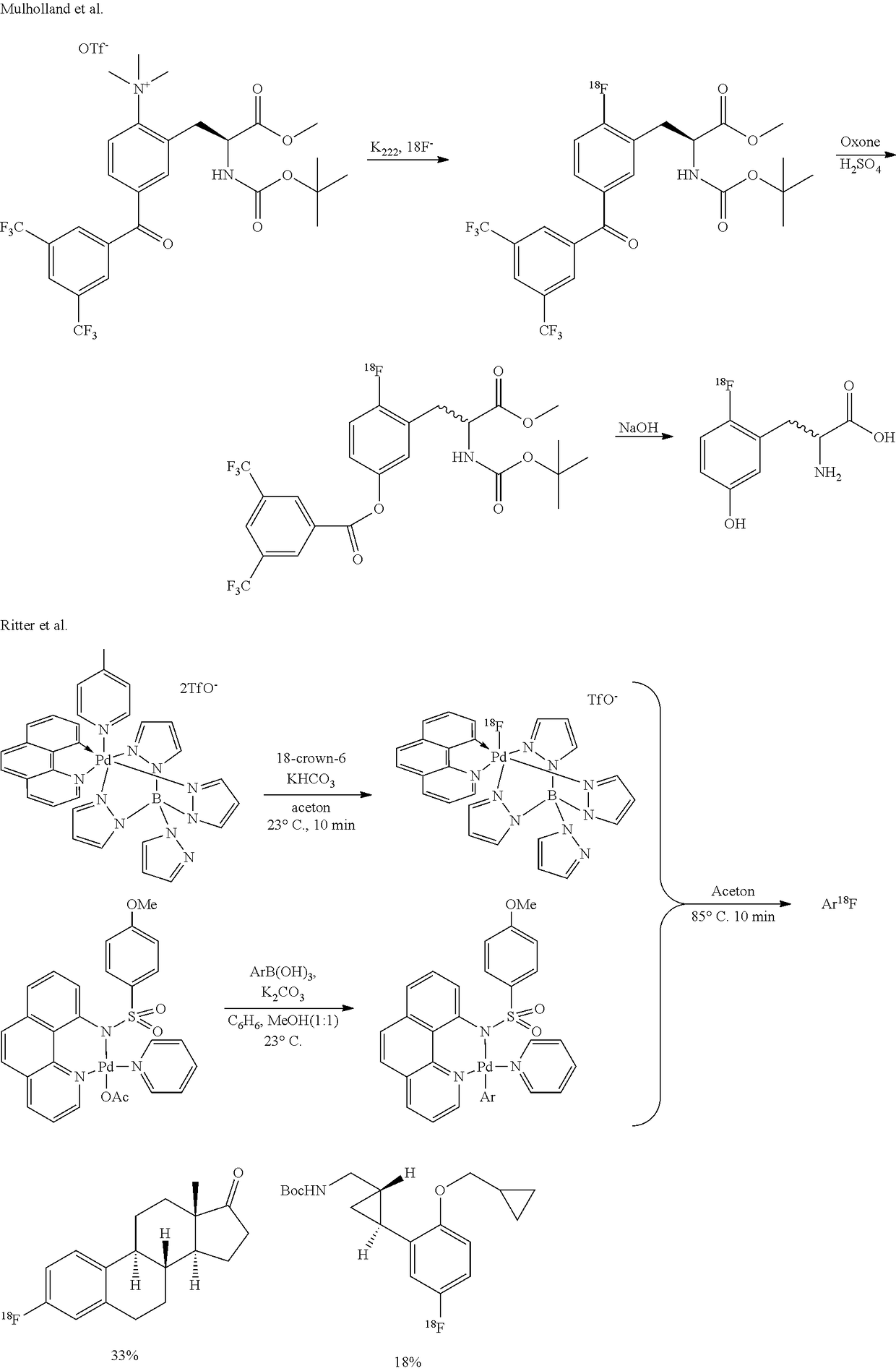Stabilization of radiosynthetic intermediates
a radiosynthetic intermediate and stabilization technology, applied in the field of radiosynthetic intermediate stabilization, can solve the problems of chemical decomposition, high radiochemical yield, and damage to the molecules of radiolabeled compounds, and achieve the effects of stabilizing the radiochemical yield of radiochemical synthesis, avoiding decomposition reactions, and high radioactivity concentration
- Summary
- Abstract
- Description
- Claims
- Application Information
AI Technical Summary
Problems solved by technology
Method used
Image
Examples
example 1
[18F]-FDOPA Synthesis with Lemaire et al. Method and with Eliminating HI in the Crucial Step
[0043]
[0044]HI was used for the halogenation and is eliminated by KOH+water rinsing step during the on cartridge process. HI was also used during the deprotection / hydrolysis step.[0045]Low activity (˜100 mCi) yield EOS: 30% (n=18).[0046]High activity (˜6 Ci) yield EOS: 3% (n=6).
example 2
[18F]-FDOPA Synthesis with Lemaire et al. Method with HI
[0047]
[0048]HI was used for the halogenation and remains present all the time during the on cartridge process. HI was also used during the deprotection / hydrolysis step.[0049]Low activity (˜100 mCi) yield EOS: 25% (n=20).[0050]High activity (˜6 Ci) yield EOS: 25% (n=10).
example 3
[18F]-FDOPA Synthesis with Lemaire et al. Method with Replacement of HI with HBr in the Crucial Step
[0051]
[0052]HBr was used for the halogenation HI was used during the deprotection / hydrolysis step.[0053]Low activity (˜100 mCi) yield EOS: 20% (n=3).[0054]High activity (˜3 Ci) yield EOS: 12% (n=2).
PUM
| Property | Measurement | Unit |
|---|---|---|
| concentration | aaaaa | aaaaa |
| structure | aaaaa | aaaaa |
| Ph | aaaaa | aaaaa |
Abstract
Description
Claims
Application Information
 Login to view more
Login to view more - R&D Engineer
- R&D Manager
- IP Professional
- Industry Leading Data Capabilities
- Powerful AI technology
- Patent DNA Extraction
Browse by: Latest US Patents, China's latest patents, Technical Efficacy Thesaurus, Application Domain, Technology Topic.
© 2024 PatSnap. All rights reserved.Legal|Privacy policy|Modern Slavery Act Transparency Statement|Sitemap



